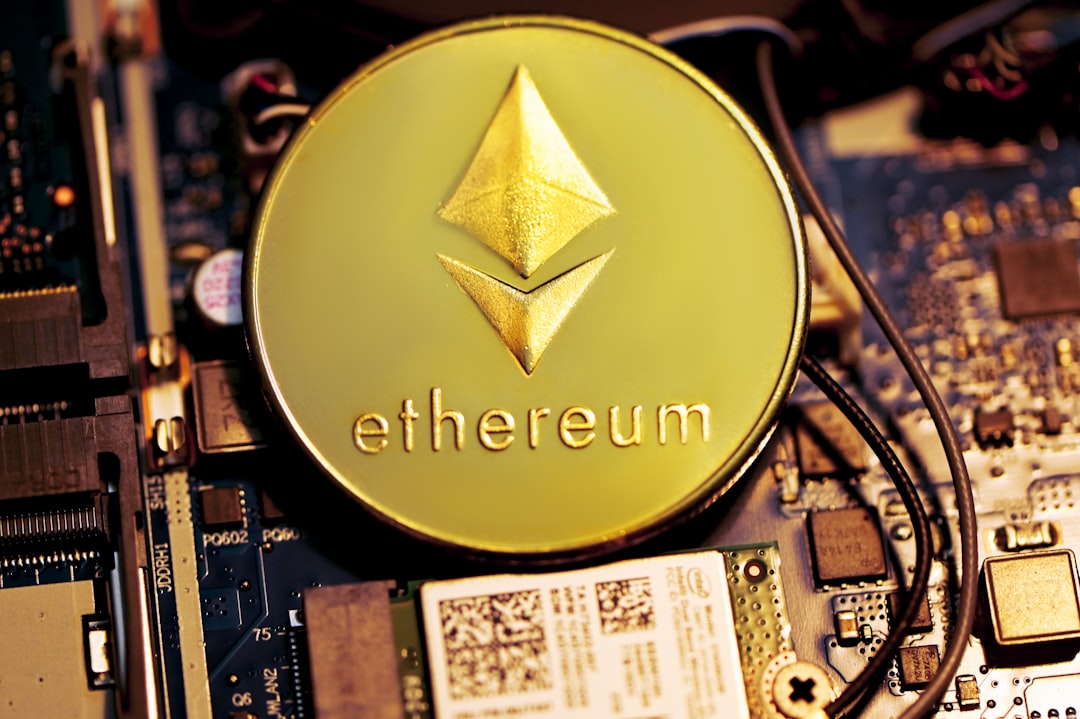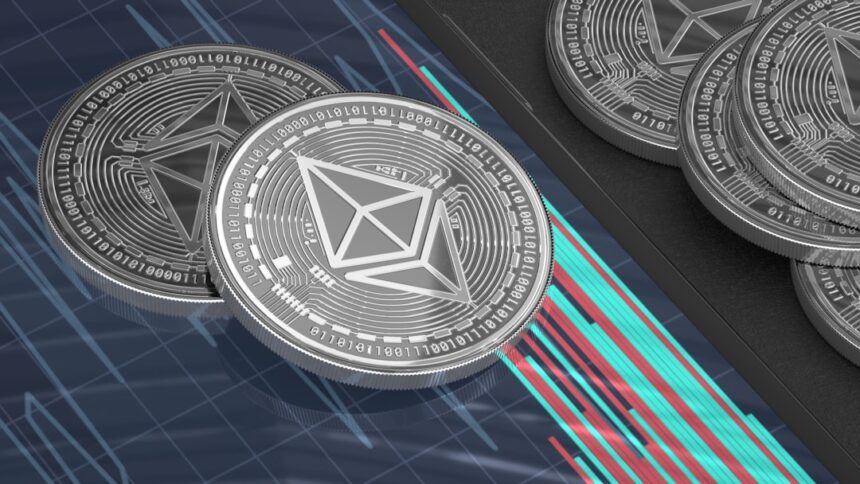Are you curious about what is Ethereum and how it can revolutionize the way we interact with technology and finance? In this complete beginner’s guide, we’re diving deep into the world of Ethereum, a groundbreaking platform that stands out in the realm of cryptocurrencies. We’ll explore the Ethereum blockchain, breaking down its key components and what sets it apart from Bitcoin. You’ll also learn about Ethereum smart contracts and their transformative potential in various industries. Through a step-by-step guide, we’ll show you how to navigate and utilize Ethereum cryptocurrency effectively. Finally, we’ll discuss the future prospects and potential challenges that Ethereum might face. So, buckle up and get ready to embark on an enlightening journey through the exciting universe of Ethereum!
Understanding Ethereum: The Basics
Ethereum is a decentralized platform that enables developers to build and deploy applications using blockchain technology. Unlike traditional systems that rely on a central authority, Ethereum operates on a peer-to-peer network, which ensures transparency and security. Here are the key components to understand:
1. Blockchain Technology: At the heart of Ethereum lies the Ethereum blockchain, a digital ledger where all transactions are recorded. This blockchain is immutable, meaning once data is added, it cannot be changed or deleted. This ensures trust and integrity in the system.
2. Smart Contracts: A pivotal innovation of Ethereum is the introduction of Ethereum smart contracts. These are self-executing contracts where the terms of agreement are directly written into code. They automatically execute and enforce the agreed-upon terms without needing intermediaries, such as lawyers or escrow agents.
3. Ether (ETH): While most are familiar with Bitcoin, Ethereum also has its native cryptocurrency known as Ethereum cryptocurrency or Ether (ETH). This digital currency is used to pay for transaction fees and computational services on the network.
Key Concepts
| Concept | Description |
|---|---|
| Decentralization | Operates without a central authority, ensuring peer-to-peer transactions. |
| Smart Contracts | Automates and enforces contract terms via code. |
| Cryptocurrency | Ether (ETH) facilitates transactions and computational services. |
| Blockchain | Immutable digital ledger ensuring secure and transparent transactions. |
Highlights
- Transparency: All transactions are public and can be verified by anyone on the blockchain.
- Security: The decentralized nature makes it resistant to hacking and fraud.
- Flexibility: Allows the creation of Decentralized Applications (DApps) and smart contracts.
Ethereum smart contracts and the Ethereum blockchain not only make Ethereum versatile but also distinguish it from other cryptocurrencies. By understanding these basics, one can grasp how Ethereum is reshaping the digital world. Whether you’re looking to develop decentralized applications or simply invest in Ethereum cryptocurrency, this knowledge sets a solid foundation for your journey.

Photo by Zoltan Tasi on Unsplash
How Ethereum Differs from Bitcoin
As we delve deeper into the world of cryptocurrencies, understanding the distinction between Ethereum and Bitcoin is essential for anyone looking to effectively navigate this space. Although both Bitcoin and Ethereum are based on blockchain technology, they serve different purposes and have unique features. Here’s how Ethereum differs from Bitcoin:
Key Differences:
1. Purpose:
- Bitcoin: Primarily a digital currency aimed at functioning as a decentralized alternative to fiat currencies. It aims to be a store of value like gold.
- Ethereum: Created as a platform for Ethereum smart contracts and decentralized applications (dApps). While Ethereum cryptocurrency, known as Ether (ETH), can be used as a digital currency, its primary role is to power transactions on the Ethereum blockchain.
2. Technology:
- Bitcoin: Utilizes a more straightforward blockchain technology optimized for secure peer-to-peer financial transactions.
- Ethereum: Incorporates a more advanced blockchain that supports Ethereum smart contracts, which are programmable contracts that automatically execute when predefined conditions are met.
3. Consensus Mechanism:
- Bitcoin: Uses Proof-of-Work (PoW) which involves solving cryptographic puzzles to validate transactions, consuming significant computational power.
- Ethereum: As of the Ethereum 2.0 upgrade, it is transitioning to Proof-of-Stake (PoS), which aims to be more energy-efficient and faster than PoW.
Comparative Table:
| Feature | Bitcoin | Ethereum |
|---|---|---|
| Primary Purpose | Digital Currency | Blockchain Platform for DApps |
| Native Token | BTC | ETH (Ether) |
| Smart Contracts | No | Yes |
| Consensus Mechanism | Proof-of-Work (PoW) | Transitioning to Proof-of-Stake (PoS) |
| Block Time | Approx. 10 minutes per block | Approx. 12-14 seconds per block |
Practical Applications:
- Bitcoin: Best used for transactions where the primary concern is sending currency securely and anonymously. Think of it as digital gold.
- Ethereum: Ideal for developers aiming to create decentralized applications and execute complex financial agreements through Ethereum smart contracts.
In summary, while both Bitcoin and Ethereum are pivotal in the world of digital assets, they serve distinct roles. Bitcoin’s focus lies in revolutionizing global transactions as a secure digital currency, whereas Ethereum excels as a platform supporting decentralized applications and contracts. Understanding these differences will help you choose the right cryptocurrency for your specific needs.
The Ethereum Blockchain Explained
The Ethereum blockchain is a decentralized platform that enables developers to build and deploy decentralized applications (dApps). Unlike traditional computing networks, it uses a network of nodes that work together to validate and record transactions, making it resilient and transparent.
Key Components
Understanding the Ethereum blockchain involves grasping its essential components:
- Nodes: These are individual computers connected to the network, all keeping a copy of the blockchain.
- Transactions: These are actions that transfer data or assets on the blockchain.
- Blocks: Grouped transactions that are validated and added to the blockchain ledger.
- Consensus Mechanism: Ethereum currently uses Proof of Stake (PoS), where validators lock up some of their Ethereum to propose and validate new blocks.
Comparison: Ethereum vs. Traditional Databases
| Feature | Traditional Databases | Ethereum Blockchain |
|---|---|---|
| Control | Centralized | Decentralized |
| Security | Vulnerable to single point of failure | Enhanced security through decentralization |
| Transparency | Limited to authorized users | Public and transparent |
| Updates | Managed by a central authority | Consensus-driven |
Smart Contracts on the Blockchain
The Ethereum blockchain sets itself apart by enabling Ethereum smart contracts. These self-executing contracts with the terms directly written into code automate transactions and agreements, reducing the need for intermediaries.
Example:
“Imagine a vending machine. You input money and select your item. The machine, knowing you have deposited enough funds, releases the item. This is a simplified version of a smart contract in action.”
Advantages of Ethereum Blockchain
By operating on blockchain technology, Ethereum offers several advantages:
- Decentralization: Reduces the risk of failure by distributing tasks across multiple nodes.
- Security: Enhanced through cryptographic techniques.
- Flexibility: Supports a wide range of applications from finance to gaming.
- Transparency: Public ledger that anyone can inspect.
Conclusion
The Ethereum blockchain offers a robust foundation for building decentralized applications, driven by transparency, security, and flexibility. With its innovative capabilities, it paves the way for a new era of digital interaction and transaction. If you’re interested in leveraging these features, learning more about Ethereum smart contracts and the Ethereum cryptocurrency is the next step.
What Are Ethereum Smart Contracts?
Ethereum Smart Contracts are one of the most revolutionary innovations in the blockchain ecosystem. But what exactly are these smart contracts, and how do they function within the Ethereum blockchain?
In essence, Ethereum smart contracts are self-executing contracts with the terms of the agreement directly written into code. They run on the Ethereum blockchain and automatically enforce and verify the terms without the need for a central authority or intermediary.
Key Features of Ethereum Smart Contracts
For a clearer understanding, let’s break down the key features of Ethereum smart contracts:
| Feature | Description |
|---|---|
| Self-Executing | Contracts execute automatically when predetermined conditions are met. No manual intervention is required. |
| Immutability | Once deployed, the contract can’t be altered. This guarantees that the agreed terms won’t change. |
| Transparency | All transactions and terms are visible on the blockchain, providing complete transparency. |
| Trustless | Parties do not need to know or trust each other since the execution relies on the code. |
| Security | Smart contracts are secured by cryptography, making them resistant to unauthorized changes or tampering. |
| Cost-Efficiency | Eliminates the need for intermediaries like lawyers or banks, reducing transaction costs. |
How to Deploy and Utilize Ethereum Smart Contracts
Deploying and utilizing Ethereum smart contracts is surprisingly straightforward. Here’s a step-by-step overview:
- Write the Contract Code: Write the smart contract using Solidity, Ethereum’s programming language.
- Test the Contract: Utilize test networks like Ropsten or Rinkeby to ensure the contract functions correctly.
- Deploy the Contract: Deploy the contract on the mainnet using an Ethereum wallet such as MetaMask.
- Execute the Contract: The contract automatically executes when the specified conditions are met.
Examples of Ethereum Smart Contracts
- Decentralized Finance (DeFi): Lending and borrowing protocols utilize smart contracts to ensure secure transactions.
- Token Issuance: Projects use smart contracts to issue new tokens (e.g., ERC-20 tokens).
- Supply Chain Management: Smart contracts track and verify the stages of product lifecycle from manufacturing to delivery.
Benefits of Using Ethereum Smart Contracts
Adopting Ethereum smart contracts comes with several benefits:
- Reliability: Assured execution without downtime.
- Cost Savings: Reduction of third-party costs.
- Speed: Swift processing once conditions are met.
- Accuracy: Minimizes human errors through automated execution.
By harnessing the capabilities of Ethereum smart contracts, businesses and individuals can automate complex contractual agreements, ensuring trust and efficiency. This innovation is pivotal in the ongoing transformation of digital transactions and decentralized applications.

Photo by Kanchanara on Unsplash
How to Use Ethereum: A Step-by-Step Guide
Embarking on your journey with Ethereum can be both exciting and daunting. With the right guidance, you’ll be utilizing the Ethereum blockchain effectively in no time. This step-by-step guide will help you navigate the essentials.
Getting Started
- Set Up a Wallet:
- Choose a Wallet: Opt for a software wallet like MetaMask, or a hardware wallet, such as Ledger or Trezor, for enhanced security.
- Create a Wallet: Follow the wallet provider’s instructions to create your wallet and obtain your recovery phrase. Store this in a secure location.
- Acquire Ether (ETH):
- Select an Exchange: Use a reputable crypto exchange like Coinbase, Binance, or Kraken.
- Purchase ETH: After setting up an account and verifying your identity, buy ETH and transfer it to your wallet.
Using Ethereum Smart Contracts
Ethereum smart contracts are self-executing contracts with the terms of the agreement written into code. Here’s how to interact with them:
- Access a Dapp (Decentralized Application):
- Visit a Dapp Platform: Sites like DeFi Pulse or DappRadar provide lists of popular dapps.
- Connect Your Wallet: Use your wallet to connect to the dapp and authorize transactions.
- Interact with Smart Contracts:
- Read the Contract: Understand the functionality and terms.
- Execute Transactions: Follow the on-screen prompts within the dapp to interact with the smart contract.
Engaging with the Ethereum Community
- Join Online Communities:
- Forums and Social Media: Platforms like Reddit, Twitter, and Discord have active Ethereum communities.
- Stay Informed: Follow updates from reputable sources to stay abreast of the latest developments.
Table: Key Steps to Use Ethereum
| Step | Description |
|---|---|
| Set Up a Wallet | Choose between software and hardware wallets; secure your recovery phrase. |
| Acquire Ether (ETH) | Buy ETH on a crypto exchange and transfer it to your wallet. |
| Access a Dapp | Use platforms to find and connect to dapps with your wallet. |
| Interact with Contracts | Engage with the smart contract by following the dapp’s prompts. |
| Join Communities | Participate in forums, social media, and stay informed with updates. |
Conclusion
By following these steps, you should be well on your way to making the most of the Ethereum blockchain ecosystem. Whether you’re transacting with Ethereum cryptocurrency or leveraging the power of Ethereum smart contracts, this guide provides the foundational steps to get you started. Stay curious and continue exploring the vibrant world of Ethereum.
The Role of Ether: Ethereum’s Cryptocurrency
To fully grasp the essence of Ethereum, it’s essential to understand the role of Ether (ETH), the system’s native cryptocurrency. Not just a digital asset, Ether serves multiple purposes within the Ethereum ecosystem, making it unique.
Medium of Exchange
Ether is the primary medium of exchange within the Ethereum network. Transactions, payments, and any on-chain activities all necessitate small amounts of ETH. Whether you are transferring funds to another user or interacting with Ethereum smart contracts, ETH is indispensable.
Fuel for Transactions
On Ethereum, every transaction and computation requires a fee, commonly known as “gas.” Gas is fueled by Ether cryptocurrency. This fee structure ensures network stability and prevents spam. Below is a quick breakdown:
- Basic transaction fee: Used for transferring ETH between addresses.
- Smart contract execution: Costs more gas due to computational complexities.
- Token transfers: Vary based on the token’s complexity.
| Activity | Average Gas Cost |
|---|---|
| Basic Transaction | 21,000 Gas |
| Simple Smart Contract | 50,000 – 200,000 Gas |
| Complex Smart Contract | 200,000+ Gas |
Incentive for Miners
Miners earn ETH by validating blocks and securing the network. This incentivizes them to maintain the Ethereum blockchain, ensuring its security and reliability. Profit from mining helps cover the costs of hardware and electricity.
Investment and Speculation
Much like Bitcoin, ETH is also a sought-after investment. Investors see potential in its increasing utility and innovations. Ether is traded on multiple exchanges and can be used as collateral in decentralized finance (DeFi) applications.
“ETH isn’t just a cryptocurrency; it’s the very lifeblood of the Ethereum network, providing the fuel, incentive, and investment potential that drive its growth.”
Governance and Upgrades
Ether holders can participate in governance and proposals for network upgrades. Holding ETH provides a voice in the future direction of the network.
To summarize, Ether is more than a digital currency; it’s integral to the Ethereum network’s operation, providing fuel for transactions, incentives for miners, and various investment opportunities. Whether you’re using it for basic transactions or complex smart contracts, understanding the role of ETH is crucial for navigating the Ethereum ecosystem effectively.
Future Prospects and Potential Challenges for Ethereum
The future of Ethereum blockchain boasts a landscape rich with opportunities and obstacles. As Ethereum continues to shape the decentralized world, understanding its potential and hurdles is key for both enthusiasts and investors.
Potential Future Prospects
1. Ethereum 2.0 Upgrade: This major structural upgrade aims to solve scalability issues and enhance security.
- Proof of Stake (PoS): Transition from Proof of Work (PoW) to Proof of Stake, reducing energy consumption.
- Sharding: Allows parallel processing, increasing transaction speed and efficiency.
2. Decentralized Finance (DeFi) Growth: Ethereum’s infrastructure supports a variety of DeFi services, enabling:
- Borrowing and Lending: Platforms allowing peer-to-peer lending.
- Decentralized Exchanges (DEXs): Trading without intermediaries.
- Yield Farming: Earning returns on cryptocurrency via various protocols.
3. NFT Expansion: Non-Fungible Tokens (NFTs) on Ethereum have revolutionized digital ownership. Key applications include:
- Digital Art: Unique digital art ownership.
- Gaming: In-game asset trading and ownership.
Potential Challenges
1. Scalability Issues: Despite Ethereum 2.0:
- Transaction Speeds: Can still struggle under high demand.
- High Gas Fees: Costs can deter smaller transactions.
2. Competition: Other blockchains, such as Binance Smart Chain and Polkadot, offer similar or enhanced features.
- Security: Ensuring smart contracts are secure and free from vulnerabilities.
- Innovation: Staying ahead with continuous development.
3. Regulatory Uncertainty: Global regulations may affect the adoption and operation of Ethereum smart contracts and related technologies.
Quick Overview
| Prospects | Challenges |
|---|---|
| Ethereum 2.0 (PoS, Sharding) | Scalability Issues |
| DeFi Growth (DEXs, Yield Farming) | High Gas Fees |
| NFT Expansion (Art, Gaming) | Increased Competition |
| Regulatory Uncertainty |
The role of Ethereum cryptocurrency in these future prospects and challenges cannot be understated. Stay informed and engaged to navigate this evolving landscape. Whether you are a developer, investor, or enthusiast, understanding these dynamics ensures you are well-prepared for the journey ahead in the Ethereum ecosystem.

Photo by Jievani Weerasinghe on Unsplash
Frequently Asked Questions
What is Ethereum?
Ethereum is an open-source, decentralized blockchain platform that facilitates the creation and execution of smart contracts and decentralized applications (dApps). Unlike Bitcoin, which primarily focuses on peer-to-peer digital currency transactions, Ethereum’s primary goal is to provide a programmable blockchain that can be used for a wide range of applications beyond just cryptocurrency.
How does Ethereum work?
Ethereum operates through the use of its own blockchain, which records transactions and smart contracts. Ether (ETH) is the native cryptocurrency used to power the platform. Smart contracts are self-executing contracts with the terms of the agreement directly written into code. These contracts automatically execute when predetermined conditions are met, eliminating the need for intermediaries. Ethereum nodes, which are computers running the Ethereum software, validate transactions and maintain the network.
What are smart contracts?
Smart contracts on Ethereum are code-driven agreements that automatically enforce and execute the terms written into them. Think of them as automated, transparent, and tamper-proof contracts that require no human intervention once set up. For example, a smart contract can be designed to release funds from one party to another only when specific conditions are fulfilled, such as the delivery of a product or service.
What can you do with Ethereum?
Ethereum’s versatility allows it to be used for a wide array of applications. You can develop and deploy dApps that operate autonomously on the blockchain, participate in Initial Coin Offerings (ICOs) to invest in new projects, create and trade non-fungible tokens (NFTs) for digital art and collectibles, and use its decentralized finance (DeFi) protocols for lending, borrowing, and trading without traditional financial institutions. The platform’s flexibility makes it a favored choice for developers and entrepreneurs alike.






Crypto content detailed!
Crypto news crisp!
Crypto tips neat!
Crypto insights engaging!
Blockchain articles clear!
Crypto tips engaging!
Crypto news fresh!
Crypto guides valuable!
Crypto updates useful!
Crypto guides awesome!
Crypto tips clear!
Informative crypto articles!
Crypto insights useful!
Crypto news useful!
Excellent crypto tips!
Blockchain updates valuable!
Crypto news clear!
Crypto insights accurate!
Blockchain news fresh!
Crypto news neat!
Superb crypto content!
Crypto content detailed!
Crypto updates rock!
Helpful Bitcoin guides!
Blockchain articles great!
Informative crypto articles!
Crypto insights reliable!
Blockchain stories engaging!
Crypto articles great!
Crypto tips engaging!